A Timeline of Miscellaneous Events in the Evolution of Early American Coinage
 MidLifeCrisis
Posts: 10,550 ✭✭✭✭✭
MidLifeCrisis
Posts: 10,550 ✭✭✭✭✭
I tried to decide the "top 10ish most important decisions made by the US Mint (or those filling that role) between 1776 and 1796 and why". This proved to be very difficult. There are just too many historically significant and interesting events that occurred in the development of US coinage. So, instead, I put together this "timeline" to highlight events that I thought were significant or just interesting.
April 19, 1776 – A committee on monetary policy was formed to examine and verify the value of silver and gold coins then circulating in the colonies. The first effort of the committee was submitted on May 22 but was put aside. On July 24, just two weeks after composing the Declaration of Independence, Thomas Jefferson was appointed to the committee. On September 2, 1776, Jefferson submitted the committee's final report which included a chart listing the primary silver and gold coins in circulation with their equivalent values in relation to the Spanish American silver dollar.
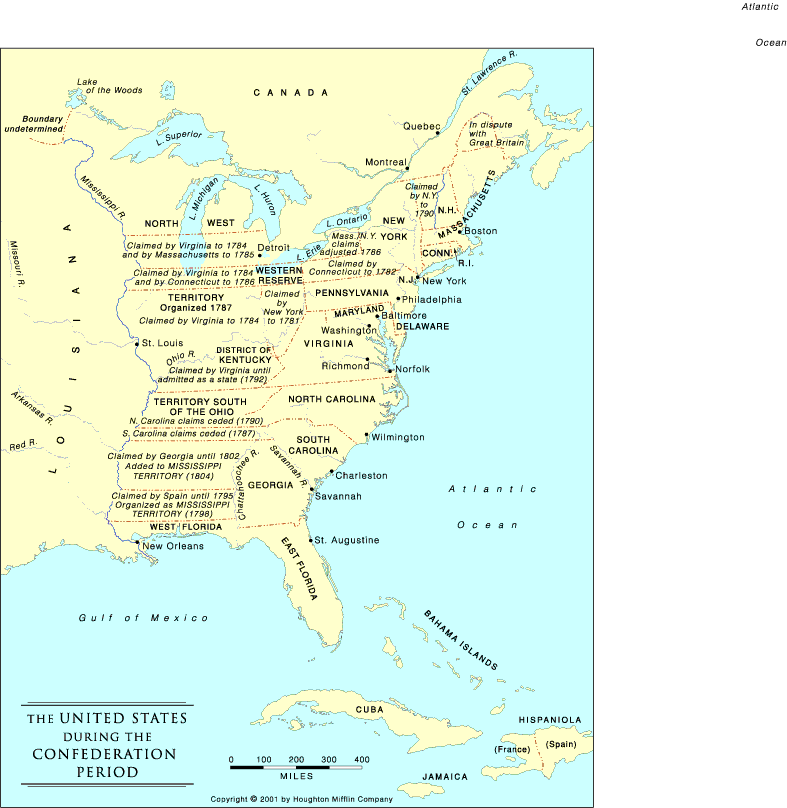
February 20, 1777 – A Congressional committee recommended the establishment of a mint. The Treasury Board was tasked to plan and regulate the Mint and its devices to be stamped on the coins. However, no further action was taken at the time.
July 9, 1778 – Articles of Confederation adopted, providing members of the continental congress with authority to regulate the value of coins minted by the congress or state legislators and to issue bills of credit.
January 15, 1782 – Superintendent of Finance Robert Morris asked for the authority to establish a mint and the adoption of a decimal coinage system in a report to Congress. Congress gave Morris permission but interest waned and nothing was done. The following year Morris commissioned Benjamin Dudley, a British die engraver living in Boston, to prepare dies. Dudley was paid $72 on May 5, 1783 for “sinking, case hardening, &c. four Pair of Dies for Public Mint.” On April 2, 1783 Dudley presented the first sample Nova Constellatio silver pattern bearing a denomination of 1,000 units (mark.) Other denominations of 500 units (quint), 100 units (bit) and 5 units were later designed and struck. Despite intense efforts an actual mint failed to materialize, and the pieces produced remained as patterns with no regular-issue counterparts being produced.
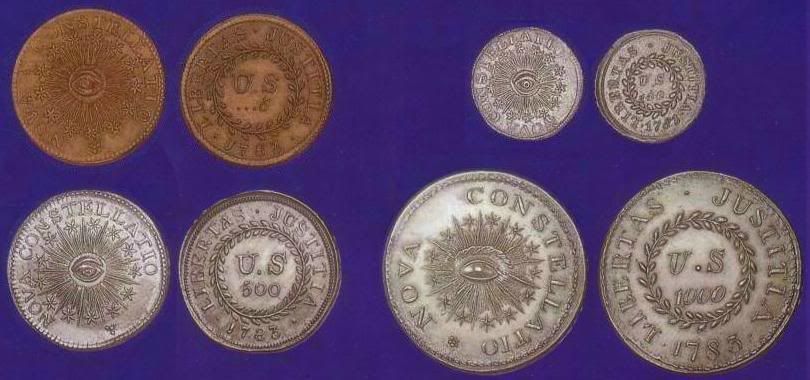
July 6, 1785 – Congress approved the dollar as the basic Currency unit with decimal subdivisions. However, no action was taken to establish a mint.
March 1786 – Lieutenant Colonel Seth Reed petitioned the Massachusetts General Court, both the House and the Senate, for a franchise to mint coins, both copper and silver, and "it was concurred". (Massachusetts Coppers) Seth Read (March 6, 1746 – March 19, 1797) was commissioned in the Revolutionary War, served in the Battle of Lexington and Concord, and commanded a regiment of troops at the Battle of Bunker Hill, Colonel Read was elected to the Massachusetts Senate in 1780. Read also served as a member of the Constitutional Convention in 1779. According to the U.S. Treasury, Colonel Reed of Uxbridge, Massachusetts was said to be instrumental in having E Pluribus Unum placed on United States coins. The first use of E Pluribus Unum on any U.S. coins was traced to copper coins minted at Newburg New York in 1786.

October 16, 1786 - Congress authorized the creation of a mint in Philadelphia, Pennsylvania.
April 21, 1787 – The Continental Congress of the Confederation passed a resolution for the contract coining of a national copper cent. The result was the minting of Fugio copper “cents”. The Fugio was to weigh 157.5 grains, equal to the English halfpence and the Massachusetts coppers. Also, like the Massachusetts coppers, they were meant to be a decimal coin based on one hundred to the Spanish milled dollar. Only about 400,000 Fugio cents were minted.


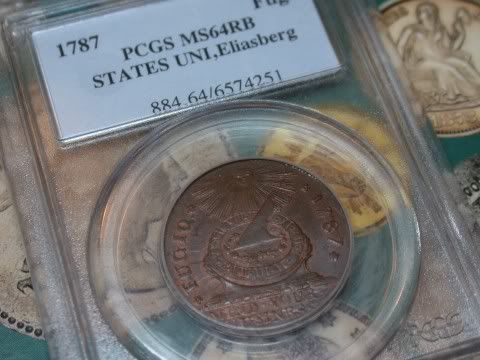
March 4, 1789 – State legislators adopt a new federal constitution to replace the Articles of Confederation. The new document allegedly defines a legislative power to coin money and regulate the value thereof, as well as prohibiting state legislators from doing likewise.
March 3, 1791 – President George Washington approved the joint resolution of Congress which established the Mint.
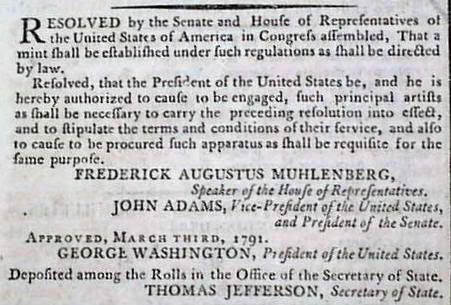
April 2, 1792 – Volume 1 Statutes at Large, 2nd Congress Session I, Chapter 16, pp. 246–251. Popularly known as the Coinage Act of 1792, addressed the establishment of a mint and the regulation of coinage of the United States.
- Statutorily established a bimetallic coinage system and a silver standard. Established a statutory definition of a dollar as a coin containing 371.25 grains of silver and 416 total grains of metal (silver and alloy). The statutory purity ratio was 1445:1664. The dollar was not a unit of value, but a unit of weight based upon a precious metal commodity.
- Established a coin called an eagle. An eagle was defined as containing 247.5 grains of gold and 270 grains total metal. The statutory purity ratio was 11:12. Contrary to popular misconception, the act did not establish a gold dollar or gold standard, but merely established the eagle with a market exchange value of 10 dollars. Additional coins included half eagles, quarter eagles, half dollars, quarter dollars, dimes, half dimes, cents, and half cents.
- Established an exchange ratio between silver and gold at 15 parts silver to 1 part gold (15:1). The ratio was between the pure metals, not the included alloys. The act established a U.S. Mint as well as allowing private coinage.
- Section 9 determined the metals and denominations of the coins to be struck. This act still remains the basis of our national coinage. It provided for the free coinage of gold and silver. In other words, anyone having gold and silver could take it to the Mint and have it coined free of expense.
- Section 19 of the act specified a punishment of death for debasing coinage.
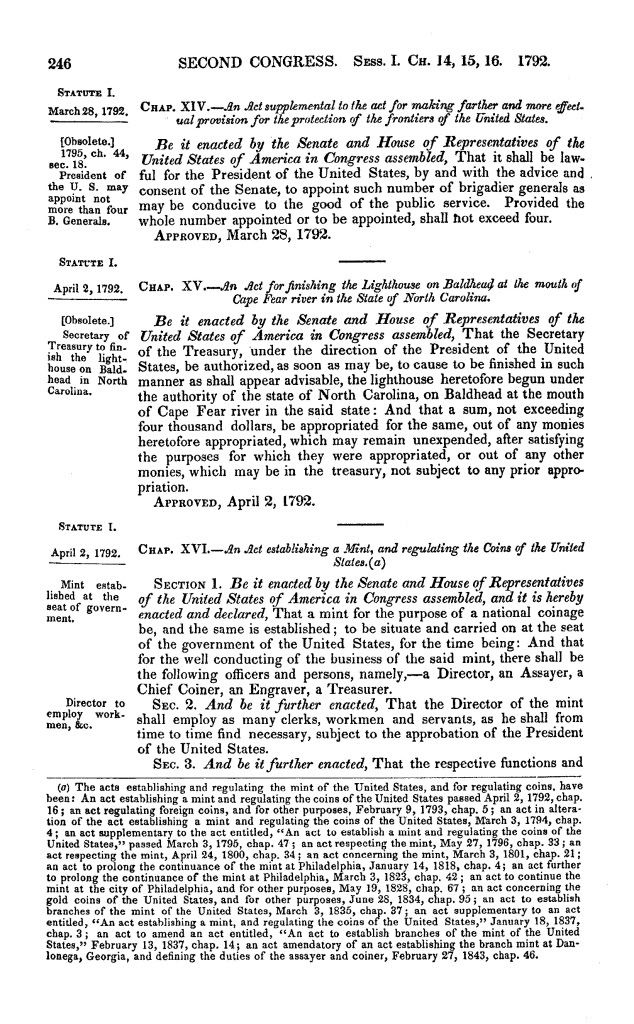
May 8, 1792 – Volume 1 Statutes at Large, 2nd Congress Session I, Chapter 39, pp. 283–284. An act to mint cent and half-cent copper coins. Section Two of the act stated that “no copper coins, or pieces whatsoever, except the said cents and half cents, shall pass current as money,” making the copper coinage produced at the Mint the only copper legal tender. Despite this intention, a flood of non-mint copper coins continued in circulation for many years thereafter; such pieces consisting of British halfpennies, “bungtown” coppers, imitation Irish and British halfpennies, coins issued by Massachusetts, New Jersey, Vermont, Connecticut, and many other styles, types, and varieties.
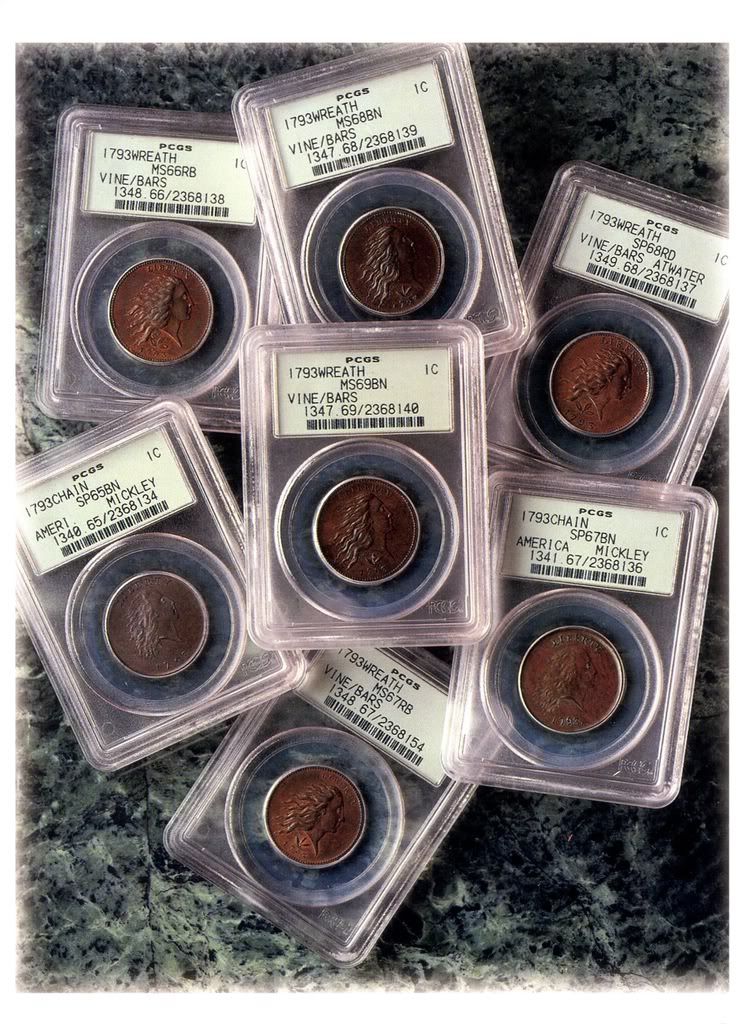
July 31, 1792 - David Rittenhouse, the 1st Director of the United States Mint, laid the cornerstone for the Philadelphia Mint.

January 7, 1793 - A "Dog of the Yard" was purchased for $3 by the United States Mint as protection. His name was Nero and he was the first of several dogs that kept guard at the Philadelphia Mint over the next quarter-century.
February 9, 1793 – Volume 1 Statutes at Large, 2nd Congress Session II, Chapter 5, pp. 300–301. Specified the exchange rates of foreign coins and declaring all such coins legal tender.
July 20, 1793 - Approximately 7,000 half-cent coins were produced by the mint, the first of their kind.
July 31, 1795 - The first gold coins, consisting of 744 half-eagles, were delivered for circulation.
Sources:
http://www.simpleliberty.org/aamht/colonial.htm
http://www.coinlink.com/Resources/biographies/us-mint-directors-from-1773/us-mint-directors-from-1773/
http://www.ask.com/wiki/Seth_Read?qsrc=3044
http://www.scvhistory.com/scvhistory/signal/coins/sg051907-coins.htm
http://www.treasury.gov/about/history/Pages/1600-1799.aspx
http://www.1794largecents.com/1794/about.htm
http://www.coins.nd.edu/ColCoin/ColCoinIntros/Fugio.intro.html
http://memory.loc.gov/cgi-bin/ampage?collId=llsl&fileName=001/llsl001.db&recNum=369
http://www.uspatterns.com/17novconpat.html
April 19, 1776 – A committee on monetary policy was formed to examine and verify the value of silver and gold coins then circulating in the colonies. The first effort of the committee was submitted on May 22 but was put aside. On July 24, just two weeks after composing the Declaration of Independence, Thomas Jefferson was appointed to the committee. On September 2, 1776, Jefferson submitted the committee's final report which included a chart listing the primary silver and gold coins in circulation with their equivalent values in relation to the Spanish American silver dollar.

February 20, 1777 – A Congressional committee recommended the establishment of a mint. The Treasury Board was tasked to plan and regulate the Mint and its devices to be stamped on the coins. However, no further action was taken at the time.
July 9, 1778 – Articles of Confederation adopted, providing members of the continental congress with authority to regulate the value of coins minted by the congress or state legislators and to issue bills of credit.
January 15, 1782 – Superintendent of Finance Robert Morris asked for the authority to establish a mint and the adoption of a decimal coinage system in a report to Congress. Congress gave Morris permission but interest waned and nothing was done. The following year Morris commissioned Benjamin Dudley, a British die engraver living in Boston, to prepare dies. Dudley was paid $72 on May 5, 1783 for “sinking, case hardening, &c. four Pair of Dies for Public Mint.” On April 2, 1783 Dudley presented the first sample Nova Constellatio silver pattern bearing a denomination of 1,000 units (mark.) Other denominations of 500 units (quint), 100 units (bit) and 5 units were later designed and struck. Despite intense efforts an actual mint failed to materialize, and the pieces produced remained as patterns with no regular-issue counterparts being produced.

July 6, 1785 – Congress approved the dollar as the basic Currency unit with decimal subdivisions. However, no action was taken to establish a mint.
March 1786 – Lieutenant Colonel Seth Reed petitioned the Massachusetts General Court, both the House and the Senate, for a franchise to mint coins, both copper and silver, and "it was concurred". (Massachusetts Coppers) Seth Read (March 6, 1746 – March 19, 1797) was commissioned in the Revolutionary War, served in the Battle of Lexington and Concord, and commanded a regiment of troops at the Battle of Bunker Hill, Colonel Read was elected to the Massachusetts Senate in 1780. Read also served as a member of the Constitutional Convention in 1779. According to the U.S. Treasury, Colonel Reed of Uxbridge, Massachusetts was said to be instrumental in having E Pluribus Unum placed on United States coins. The first use of E Pluribus Unum on any U.S. coins was traced to copper coins minted at Newburg New York in 1786.

October 16, 1786 - Congress authorized the creation of a mint in Philadelphia, Pennsylvania.
April 21, 1787 – The Continental Congress of the Confederation passed a resolution for the contract coining of a national copper cent. The result was the minting of Fugio copper “cents”. The Fugio was to weigh 157.5 grains, equal to the English halfpence and the Massachusetts coppers. Also, like the Massachusetts coppers, they were meant to be a decimal coin based on one hundred to the Spanish milled dollar. Only about 400,000 Fugio cents were minted.



March 4, 1789 – State legislators adopt a new federal constitution to replace the Articles of Confederation. The new document allegedly defines a legislative power to coin money and regulate the value thereof, as well as prohibiting state legislators from doing likewise.
March 3, 1791 – President George Washington approved the joint resolution of Congress which established the Mint.

April 2, 1792 – Volume 1 Statutes at Large, 2nd Congress Session I, Chapter 16, pp. 246–251. Popularly known as the Coinage Act of 1792, addressed the establishment of a mint and the regulation of coinage of the United States.
- Statutorily established a bimetallic coinage system and a silver standard. Established a statutory definition of a dollar as a coin containing 371.25 grains of silver and 416 total grains of metal (silver and alloy). The statutory purity ratio was 1445:1664. The dollar was not a unit of value, but a unit of weight based upon a precious metal commodity.
- Established a coin called an eagle. An eagle was defined as containing 247.5 grains of gold and 270 grains total metal. The statutory purity ratio was 11:12. Contrary to popular misconception, the act did not establish a gold dollar or gold standard, but merely established the eagle with a market exchange value of 10 dollars. Additional coins included half eagles, quarter eagles, half dollars, quarter dollars, dimes, half dimes, cents, and half cents.
- Established an exchange ratio between silver and gold at 15 parts silver to 1 part gold (15:1). The ratio was between the pure metals, not the included alloys. The act established a U.S. Mint as well as allowing private coinage.
- Section 9 determined the metals and denominations of the coins to be struck. This act still remains the basis of our national coinage. It provided for the free coinage of gold and silver. In other words, anyone having gold and silver could take it to the Mint and have it coined free of expense.
- Section 19 of the act specified a punishment of death for debasing coinage.

May 8, 1792 – Volume 1 Statutes at Large, 2nd Congress Session I, Chapter 39, pp. 283–284. An act to mint cent and half-cent copper coins. Section Two of the act stated that “no copper coins, or pieces whatsoever, except the said cents and half cents, shall pass current as money,” making the copper coinage produced at the Mint the only copper legal tender. Despite this intention, a flood of non-mint copper coins continued in circulation for many years thereafter; such pieces consisting of British halfpennies, “bungtown” coppers, imitation Irish and British halfpennies, coins issued by Massachusetts, New Jersey, Vermont, Connecticut, and many other styles, types, and varieties.

July 31, 1792 - David Rittenhouse, the 1st Director of the United States Mint, laid the cornerstone for the Philadelphia Mint.

January 7, 1793 - A "Dog of the Yard" was purchased for $3 by the United States Mint as protection. His name was Nero and he was the first of several dogs that kept guard at the Philadelphia Mint over the next quarter-century.
February 9, 1793 – Volume 1 Statutes at Large, 2nd Congress Session II, Chapter 5, pp. 300–301. Specified the exchange rates of foreign coins and declaring all such coins legal tender.
July 20, 1793 - Approximately 7,000 half-cent coins were produced by the mint, the first of their kind.
July 31, 1795 - The first gold coins, consisting of 744 half-eagles, were delivered for circulation.
Sources:
http://www.simpleliberty.org/aamht/colonial.htm
http://www.coinlink.com/Resources/biographies/us-mint-directors-from-1773/us-mint-directors-from-1773/
http://www.ask.com/wiki/Seth_Read?qsrc=3044
http://www.scvhistory.com/scvhistory/signal/coins/sg051907-coins.htm
http://www.treasury.gov/about/history/Pages/1600-1799.aspx
http://www.1794largecents.com/1794/about.htm
http://www.coins.nd.edu/ColCoin/ColCoinIntros/Fugio.intro.html
http://memory.loc.gov/cgi-bin/ampage?collId=llsl&fileName=001/llsl001.db&recNum=369
http://www.uspatterns.com/17novconpat.html
0
Comments
Worry is the interest you pay on a debt you may not owe.
"Paper money eventually returns to its intrinsic value---zero."----Voltaire
"Everything you say should be true, but not everything true should be said."----Voltaire
Jim
When a man who is honestly mistaken hears the truth, he will either quit being mistaken or cease to be honest....Abraham Lincoln
Patriotism is supporting your country all the time, and your government when it deserves it.....Mark Twain
Coin's for sale/trade.
Tom Pilitowski
US Rare Coin Investments
800-624-1870
The same site said Susan B Anthony was the first woman on a US dollar , why doesnt Lady Liberty count ?I know one was a real person and one wasn't but that's not to say it isnt a female figure on the US dollar from 1794 to 1935.
Love the Nova Constellatios!
In honor of the memory of Cpl. Michael E. Thompson
Looking for Top Pop Mercury Dime Varieties & High Grade Mercury Dime Toners.
<< <i>Thanks for posting this. I correctly guessed from the subject and poster that it would be a good one. >>
RMR: 'Wer, wenn ich schriee, hörte mich denn aus der Engel Ordnungen?'
CJ: 'No one!' [Ain't no angels in the coin biz]
January 7, 1793 - A "Dog of the Yard" was purchased for $3 by the United States Mint as protection. His name was Nero and he was the first of several dogs that kept guard at the Philadelphia Mint over the next quarter-century.
Not one of the Top 10ish decisions...but certainly very cool. Any idea what kind of dogs or any more info?
Looking for Top Pop Mercury Dime Varieties & High Grade Mercury Dime Toners.
Looking for Top Pop Mercury Dime Varieties & High Grade Mercury Dime Toners.
Good to know Jefferson was on a project to estimate the amount of gold and silver in the colonies just after the Declaration.
The map is very useful. I knew many former colonies had claimed land west of the Appalachians but I didn't realize how much Virginia had claimed, nor the small original size of Pennsylvania.
David Rittenhouse was the first director of the US Mint. Wikipedia mentions that Rittenhouse consulted on the design of the Nova Constellatio and "In 1871 Congress approved a commemorative coin in his honor." Was this a coin or a medal? Also, was one ever produced?
RMR: 'Wer, wenn ich schriee, hörte mich denn aus der Engel Ordnungen?'
CJ: 'No one!' [Ain't no angels in the coin biz]
Looking for Top Pop Mercury Dime Varieties & High Grade Mercury Dime Toners.
David Rittenhouse was the first director of the US Mint. Wikipedia mentions that Rittenhouse consulted on the design of the Nova Constellatio and "In 1871 Congress approved a commemorative coin in his honor." Was this a coin or a medal? Also, was one ever produced?
************
It was a medal authorized by Mint Director James Pollock and executed
by Chief Engraver William Barber. I believe it was last struck for sale to
the public in the mid 1980s.
The medal is dated 1871, and no doubt first struck that year, but does
not seem to have been sold to the public until early in 1874.
David Rittenhouse was born the son of farmer Matthias Rittenhouse in Germantown, Pennsylvania. He married Eleanor Coulston, and then after her death, Hannah Jacobs. He became an astronomer, mathematician, instrument maker and one of the leading American scientists of the eighteenth century, second only to Benjamin Franklin.
Self-taught, he early showed mathematical and mechanical ability, and mastered Newton’s Principia in an English translation. As a young boy Rittenhouse constructed a model of a watermill, and by the age of seventeen he had built a wooden clock, but having little opportunity to attend school, he largely educated himself from books and a box of tools inherited from his uncle David Williams, a furniture maker. At the age of nineteen he began making clocks and other mechanical and scientific devices.
Over the next thirty or forty years he made many highly-prized and innovative mathematical and astronomical instruments, most famous of which were two orreries he constructed for the Colleges of New Jersey (now Princeton University) and Philadelphia (now the University of Pennsylvania). These orreries show the solar and lunar eclipses and other phenomena for a period of 5,000 years either forward or backward. After moving to Philadelphia in 1770, Rittenhouse used both astronomical and terrestrial observations to survey canals and rivers and to establish the boundaries between many of the Mid-Atlantic States. He held the post of city surveyor of Philadelphia in 1774.
His scientific thinking and experimentation earned Rittenhouse considerable intellectual prestige in America and in Europe. He built his own observatory at his father’s farm in Norriton, outside of Philadelphia. Rittenhouse maintained detailed records of his observations and published a number of important works on astronomy, including a paper putting forth his solution for locating the place of a planet in its orbit. He was a leader in the scientific comunity’s observance of the transit of Venus in 1769, which won him broad acclaim. He also sought to solve mathematical problems, publishing his first mathematical paper in 1792, an effort to determine the period of a pendulum. He also experimented with magnetism and electricity.
Rittenhouse was elected a member of the American Philosophical Society in 1768, serving over the years as curator, librarian, secretary, vice president and, from 1791 to 1796, its president. He was elected to its committee to observe the transits of Venus and Mercury in 1769 based on plans he had made. Over the years he received a number of honorary degrees including those from the Colleges of New Jersey and Philadelphia. In addition he was elected a member of the American Academy of Arts and Sciences, and a fellow of the Royal Society of London.
Rittenhouse used his scientific skills for practical purposes during the American Revolution. In 1775 he began his service on the Committee of Safety as an engineer supervising local casting of cannon, improvement of rifles, supply of ammunition and selection of sites for gunpowder mills and magazine stores. In the late 1770s Rittenhouse was a member of the Pennsylvania Assembly, the Pennsylvania Constitutional Convention of 1776, and the Board of War. From 1779 to 1787 Rittenhouse was Treasurer of Pennsylvania, and from 1792 -1795 he served as Director of the U.S. Mint.
Credit for the success of the Mint belongs in great part to David Rittenhouse. In Philadelphia today, his name graces the city’s most fashionable address — Rittenhouse Square, about a mile west of the Historic District. Like Benjamin Franklin and John Bartram, he was one of those extraordinary men of early Philadelphia with diverse interests who made manifold contributions: he was a clockmaker, philosopher, surveyor, mathematician, politician and astronomer; he determined the boundary between Pennsylvania and Maryland long before Mason and Dixon; many credit him with having built the first telescope made in the United States; he constructed an orrery, a device familiar mostly to astronomers and crossword solvers — it’s a clocklike mechanism that describes the position of the planets as they orbit the sun; and, he was director of the Mint for its crucial first three years.
Rittenhouse was Penn’s Professor of Astronomy at Philadelphia from 1779 to 1782 and Vice-Provost in 1780 and 1782. He also served Penn as a trustee of the University of the State of Pennsylvania (1779-1780 and 1782-1791) and then, after its union with the College of Philadelphia, as a trustee of the University of Pennsylvania (1791-1796).
In addition to having one of William Penn's five original open-space parks named after him in 1825 as Rittenhouse Square, there is also a prominent social club named after him, the Rittenhouse Club established in 1875 around the time his medal was released. Is there any significance to Rittenhouse's medal and this club being established around the time of the centennial?
The medal says "He Belonged to the Whole Human Race" on the reverse.
Images from the Brooklyn Musuem:
<< <i>Ive a question, i was on a site yesterday that had a "coin facts" section , it's only real mention of colonial coins was that many of them had a cod fish on them.I havnt looked in a red book to see and using only memory and a few years experience on forums i don't think ive seen one never mind many of them.What coins are they talking about ? >>
I think that's a misprint that may actually be referring to colonial currency such as this example.
coinstar facts
<< <i>It's actually on Coinstars "coin facts" page , i realise it's not to be considered an experts comment on a specialist site , but you'd think they could get a few facts correct.I can see at least 3 that are not correct.
coinstar facts >>
This is why Internet research - or really any research - can be so tricky...there are errors everywhere and those errors usually get perpetuated by other sites. Even if you use sites that you believe are reputable, you have to be careful.
That is a great informative post!